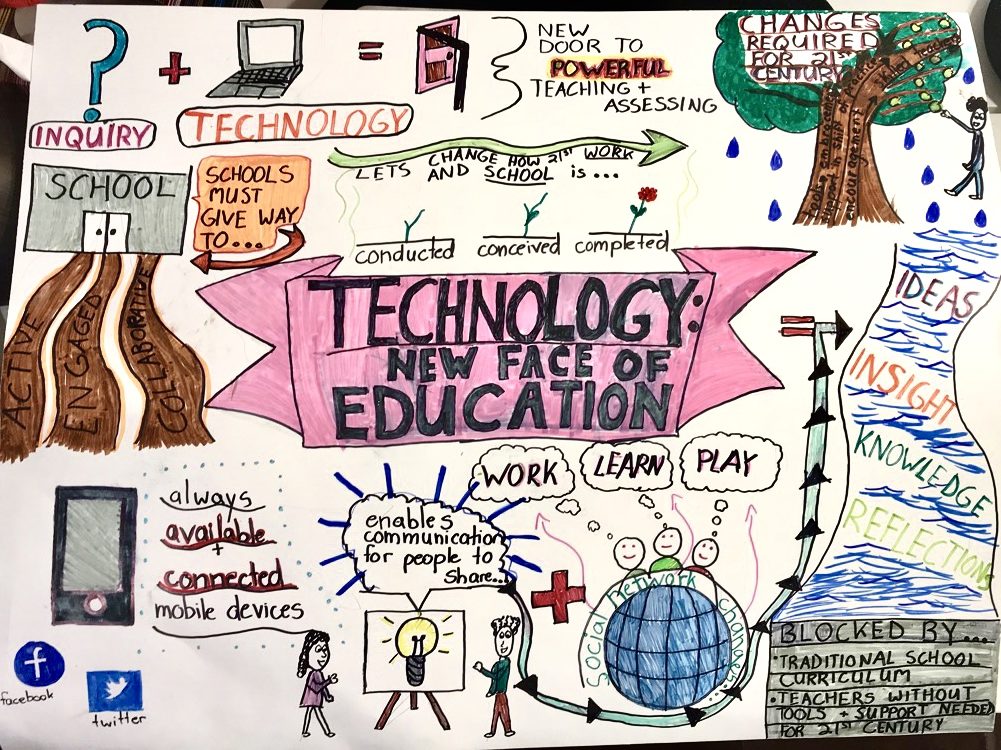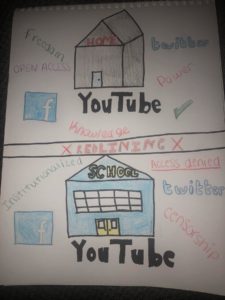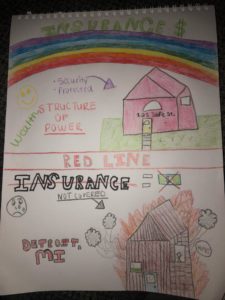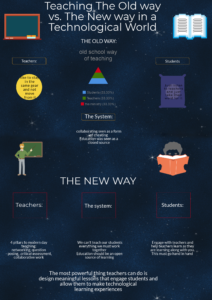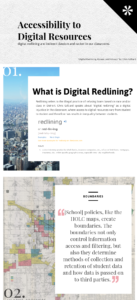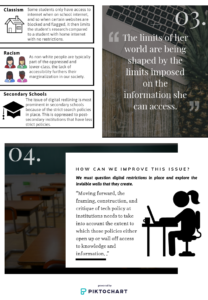For my second multimedia reflection, it was based on the Jacobsen article, Teaching in a Participatory Digital World, and the Jenkins video, The Influence of Participatory Culture on Education, I focused on the true importance of why technology is important in education.
Not only does the classroom become a place where the use of social media becomes much safer when teachers are showing students how to use it in a positive way, but the classroom also becomes a space where teachers and students begin to share their knowledge, making a more valuable learning experience for everyone.
The digital world is changing mindsets in regards to schooling, teaching, learning, and assessing. Technology and inquiring (both students and teaching) creates a new door to powerful teaching and assessment. Schools must begin to give way and accept these more active, engaged, and collaborative learning and teaching relationship…which is all thanks to educational technologies.
The great thing about technology is most students nowadays have an always available and connected mobile device. It is time we teach our students in what ways they can use this in a positive manner. For example, having these available and connected mobile devices enables communication between people from all over the world to share experiences, ideas, reflections, and insight. Using social networking in both schools and workplaces, changes how everyone works, learns, and plays. We are creating a new approach to both school and workplace, as to how they are conceived, conducted, and completed.
During my practicum, I have noticed that technology has already begun to be implemented in current classes. Although when I was younger, there was little to no technology being used. Many teachers and students use a program called Edsby- this is a program where teachers can post information about course content for all the student’s parents to see. Furthermore, it has become a means to take attendance in all classes. Edsby seems like a great way for students to keep track of their student’s attendance, assignments, progress, and overall school content…especially for those parents who have children who don’t share what they have been doing in school. Creating this multimedia has really given me the opportunity to reflect on further benefits of the use of technology in classes. I never once would have thought that the use of technology gave way for students to create networks with other students from all over the world. It also never occurred to me that social media can be used in the classroom, which can be conducted in a safe and fun manner, with the assistance of the teacher. When I was in school, phones were banned. There were firewalls against social platforms such as Twitter, MSN, Instagram, etc. Although there are still firewalls against many of these social platforms in all of today’s schools, there will soon be a shift in how we use these platforms. Teachers will have the necessary tools to educate students on how to safely use these platforms in a positive manner- in turn, students will become in touch with others which will result in sharing knowledge, insight, ideas, etc.
There are certain steps we must follow to ensure that teachers can teach students how to make use of technology in a positive manner- we need to make the tools and practices readily available for teachers, we need support in this major shift in practice, and we need our mentors to be engaged and skilled. Teachers have a greater effect on students than the school itself, that’s why it is so important that we have proper leaders and mentors who model the students of the 21st-century using technology in their teaching practices.
Below is a sketchnote I had fun creating. I’ve also created a video which examines my sketchnote more closely. You can see it by clicking here.
-Kirsti Willson
#Uwindig
